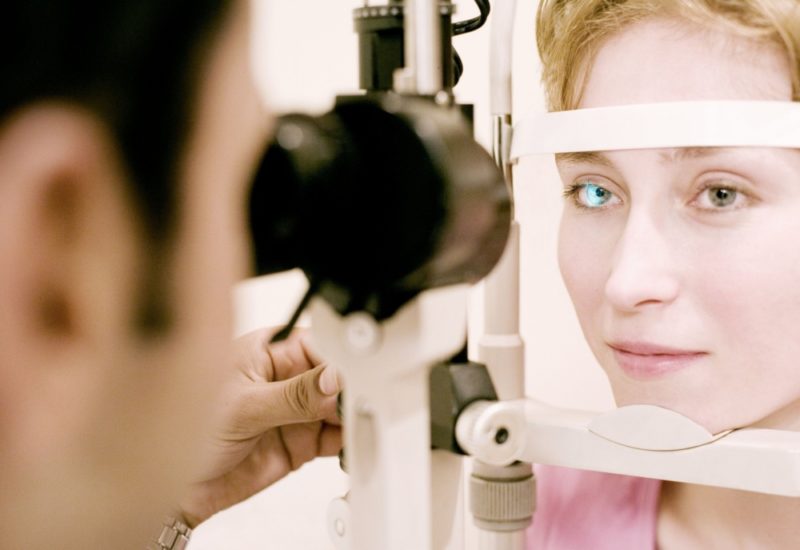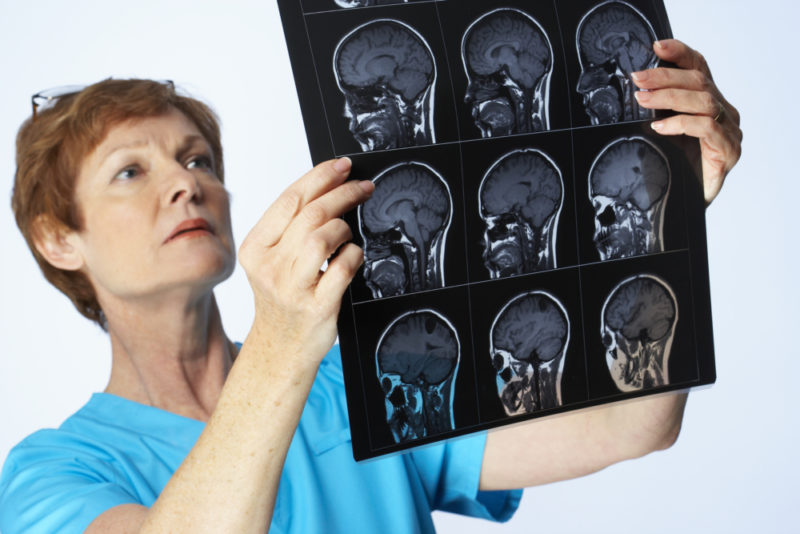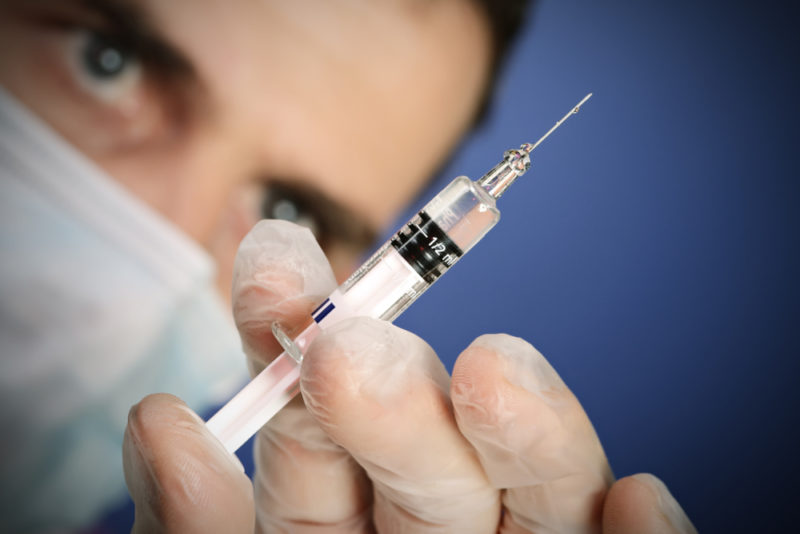Meningitis of any etiology is a formidable disease with high mortality and serious complications. Due to the atypical course in the initial period, tuberculous meningitis is poorly amenable to early diagnosis, which does not allow to start treatment on time and aggravates the prognosis.
Material Content:
Causes of Tuberculous Meningitis
If in other forms of meningitis different pathogens (from various bacteria to protozoa and fungi) can become the cause, then it is always the same for meningitis of tuberculous etiology. This is Koch's bacillus and all its strains belonging to the mycobacteria family. She is the cause of tuberculosis infection of any localization. Meningitis is extrapulmonary tuberculosis.
Doctors distinguish between primary and secondary tuberculous meningitis:
- in the first case, the primary tuberculous lesion cannot be detected, the proportion of primary meningitis is small;
- secondary meningitis is a consequence of the penetration of tuberculous bacteria into the brain substance by hematogenous, which happens most often, and by the lymphogenous way.
With the flow of blood, Koch sticks enter the vessels of the ventricles of the brain with the formation of granulomas. From there, they spread further with lymph, to the base of the brain, forming miliary tubercles, and inflammatory and allergic changes appear around them. A large amount of serous fluid is formed. The permeability of blood vessels varies, their necrosis and thrombosis are possible.
If inflammatory changes have captured the arachnoid and soft membrane, leptomeningitis is diagnosed.When brain matter is involved, meningoencephalitis has developed.
Symptoms in children and adults
Doctors distinguish several periods in the development of this disease.
Depending on this, the symptoms vary:
- The initial period is called prodromal. Its duration is from 1 to 2 weeks. The patient complains of a headache, especially in the evening, subfebrile condition, poor health. It can be irritable or lethargic. By the end of the prodromal period, the headache becomes more intense, nausea, and sometimes vomiting, join. At this stage, the diagnosis is difficult.
- In the period of irritation, all symptoms intensify sharply: the temperature rises, reaching high numbers, the increased sensitivity of the skin, the fear of bright light and loud sounds, join in. Headache is very severe. The patient becomes drowsy and lethargic. Autonomic vascular innervation is frustrated, which is manifested by the appearance and rapid disappearance of red spots on the face and chest. Meningeal symptoms appear and gradually increase: tension of the occipital muscles, Kernig symptom and Brudzinsky symptoms. The duration of the second period is from 8 to 14 days. By its end, the diagnosis is beyond doubt. The confused consciousness of the patient speaks for him, his lethargy, as well as the forced posture in the bed: on his side, legs bent at the knees, his head thrown back.
- The last stage of the disease is the occurrence of paresis, and then paralysis. The temperature is very high, can reach 41 degrees, sometimes it, on the contrary, decreases against normal values. Consciousness is lost. Cramps occur. There is tachycardia and breathing according to the Cheyne-Stokes type. Mortality in this period without treatment is 100%.
Depending on what clinical form the disease takes, these or other symptoms may prevail: - With basilar meningitis, the development is gradual, the prodromal period can last up to 4 weeks. The period of irritation is characterized by an increase in headache intensity, vomiting "fountain", a complete refusal of food. Symptoms of damage to the cranial nerves, manifested by strabismus, hearing impairment, vestibular disorders, coughing, dysphonia, are joining the progressive meningeal syndrome.
- With tuberculous meningoencephalitis, it usually corresponds to the third stage of the disease, in the first place - the symptoms of encephalitis. This is loss of consciousness, paresis and paralysis, cardiac arrhythmias and breathing.
Symptoms of tuberculous meningitis in children older than a year are in many ways similar to those in this disease in adults. It can be noted constipation, which is not accompanied by bloating.
Children under one year old have a slightly different picture:
- the acute course of the disease is characteristic, the prodromal period is very short;
- rapid loss of consciousness;
- early onset convulsions, paralysis, paresis, damage to the cranial nerves;
- mild meningeal symptoms;
- rapid stools and vomiting resemble dyspepsia;
- swelling fontanel indicates the development of hydrocephalus.
But such vivid manifestations of the disease are not always.
Often the symptoms are so erased that it is simply impossible to make a correct diagnosis without examining the cerebrospinal fluid.
Diagnostic Methods
Diagnosis of tuberculous meningitis in the prodromal period is difficult. With the development of the disease, the picture becomes clearer.
To confirm the diagnosis, the following activities are performed:
- find out the possibility of contact with a patient with tuberculosis, as well as when vaccination and tuberculin tests were carried out and their result (the severity of the process can make them negative);
- examine the patient and check for symptoms indicating inflammation of the meninges;
- examine the fundus;
- carry out an x-ray of the lungs;
- with the help of MRI and CT of the head, an increase in the size of the ventricles of the brain is detected.
But the most informative will be the study of fluid taken from the spinal canal using lumbar puncture.
Liquor in tuberculous meningitis has certain features:
- high pressure - leakage with frequent drops, sometimes with a stream;
- the liquid is clear or opalescent;
- the formation of a fibrinous network in about a day;
- the definition of cells in the cerebrospinal fluid - there may be more than 100, at first they are a mixture of white blood cells and neutrophils, the latter soon disappear;
- protein content is higher than normal;
- the concentration of chlorides and sugar is reduced.
The totality of all the symptoms of the disease helps to make the correct diagnosis.
Extrapulmonary tuberculosis treatment
Treatment of tuberculous meningitis lasts more than one month, it is carried out only in stationary conditions:
- a combination of several bactericidal anti-tuberculosis drugs is selected, which are administered drip, and sometimes endolumbally;
- corticosteroids are prescribed;
- if brain edema is detected, dehydration therapy will be required;
- measures are being taken to reduce intoxication;
- to relieve symptoms, anticonvulsant and vascular-improving drugs are prescribed;
- after 3-4 months from the start of treatment, absorbable medicines will be needed;
- to restore brain functions - nootropics;
- medications that improve cerebral blood flow are prescribed.
Strict bed rest, light and nutritious food are needed.
Prognosis for recovery
The prognosis depends entirely on how quickly the diagnosis is made and treatment is started. In the early stages, a complete recovery is possible. If treatment is started at the stage of irritation, complications are possible. In the third stage, the prognosis is most often unfavorable.
Possible complications
The most common complication requiring surgical correction is hydrocephalus. If the disease began to be treated in the stage of irritation, persistent paralysis and paresis, visual impairment, and sometimes its loss, can remain. In children, epilepsy is possible in the first few years. Developed encephalitis is complicated by a violation of mental abilities, up to idiocy.
Prevention
The most effective method of prevention is timely and fully vaccinated against tuberculosis. It is necessary to undergo annual medical examinations and not evade fluorography. If tuberculosis is detected, you need to be monitored by a TB doctor and follow all his recommendations, immediately seek medical help if the condition worsens.
Tuberculous meningitis can be defeated only with timely treatment.


















